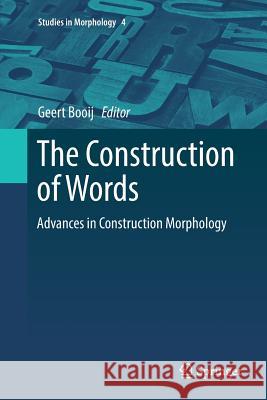The Construction of Words: Advances in Construction Morphology » książka
topmenu
The Construction of Words: Advances in Construction Morphology
ISBN-13: 9783030089795 / Angielski / Miękka / 2019 / 622 str.
Kategorie:
Kategorie BISAC:
Wydawca:
Springer
Seria wydawnicza:
Język:
Angielski
ISBN-13:
9783030089795
Rok wydania:
2019
Wydanie:
Softcover Repri
Ilość stron:
622
Waga:
0.87 kg
Wymiary:
23.39 x 15.6 x 3.25
Oprawa:
Miękka
Wolumenów:
01











